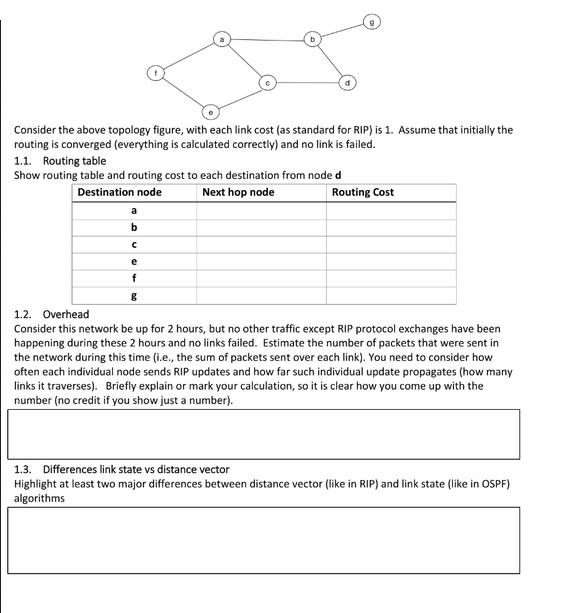Answered step by step
Verified Expert Solution
Question
1 Approved Answer
Consider the above topology figure, with each link cost (as standard for RIP) is 1. Assume that initially the routing is converged (everything is

Consider the above topology figure, with each link cost (as standard for RIP) is 1. Assume that initially the routing is converged (everything is calculated correctly) and no link is failed. 1.1. Routing table Show routing table and routing cost to each destination from node d Destination node Next hop node a b e f B Routing Cost 1.2. Overhead Consider this network be up for 2 hours, but no other traffic except RIP protocol exchanges have been happening during these 2 hours and no links failed. Estimate the number of packets that were sent in the network during this time (i.e., the sum of packets sent over each link). You need to consider how often each individual node sends RIP updates and how far such individual update propagates (how many links it traverses). Briefly explain or mark your calculation, so it is clear how you come up with the number (no credit if you show just a number). 1.3. Differences link state vs distance vector Highlight at least two major differences between distance vector (like in RIP) and link state (like in OSPF) algorithms
Step by Step Solution
★★★★★
3.44 Rating (147 Votes )
There are 3 Steps involved in it
Step: 1
11 Routing table for node d Destination NodeNext Hop NodeRouting Cost a b2 bb1 cc1 ee1 fe2 gc2 12 Overhead To estimate the number of packets sent in the network during the 2hour period we need to cons...
Get Instant Access to Expert-Tailored Solutions
See step-by-step solutions with expert insights and AI powered tools for academic success
Step: 2

Step: 3

Ace Your Homework with AI
Get the answers you need in no time with our AI-driven, step-by-step assistance
Get Started


